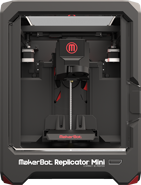Almost three weeks ago Brandon Stanton began a series on his photoblog Humans of New York detailing the stories of MSK’s youngest patients, their families, those who care for them, and are trying to find the cures to save their lives. The fundraiser he started, “Lets Help Dr. O’Reilly Fight Pediatric Cancer” has raised nearly $4M in the process. Two-thirds of the money will be allocated to pediatric cancer research at MSK (including over $1M going toward helping Dr. Mark Souweidane in his research on DIPG in memory of Max). The other third will be used to provide emotional and social support for the kids and their families. Across the Internet, everyone was abuzz about this HONY series and Brandon’s fundraiser, the HuffingtonPost even called it the “most moving HONY series yet“.
Bacteria from the human microbiome is now being studied to prevent infections and graft-vs-host disease in patients treated with stem cell transplants, thanks to a new partnership between MSK and Seres Therapeutics. The two are seeking to to discover and develop microbiome cancer drugs for therapeutic use.
MSK patients in Bergen County will no longer have to trek to Manhattan for many outpatient treatments. On May 10th, MSK announced plans for its new Montvale Cancer Center, which will open in 2017. The center is already providing CT scans in a temporary unit on the property, but the complete facility will provide all outpatient treatments except surgery (chemo therapy, radiation, imaging, and support).
A recent physician-led quality improvement study at MSK showed that preoperative chemoprophylaxis prevents VTE in major oncology surgeries. Researchers compared data from the patients who underwent surgery after the intervention was implemented versus those before it was implemented and found that there was no statistically significant difference in the rate of major bleeding events, and those who were treated after the intervention was implemented had a lower rate of documented bleeding, a lower rate of any transfusion, and a lower rate of both DVT and PE.
Selby LV, et al. J Am Coll Surg. 2015;doi:10.1016/j.jamcollsurg.2015.11.011.
Dr. Chau Dang, Chief of Medical Oncology at West Harrison, talks about her motivation in treating breast cancer patients and in giving people second chances, reflecting on her own roots in escaping from Saigon during the siege as a young child and given a second chance at life in America. Her patients are first and foremost, leaving paperwork and research to late nights and weekends. But it hasn’t stopped her from leading several large scale clinical trials, such as her current research in evaluating combination therapies that include anti-HER2 drugs with chemotherapy in treating patients with early-stage and metastatic HER2-positive breast cancer.
